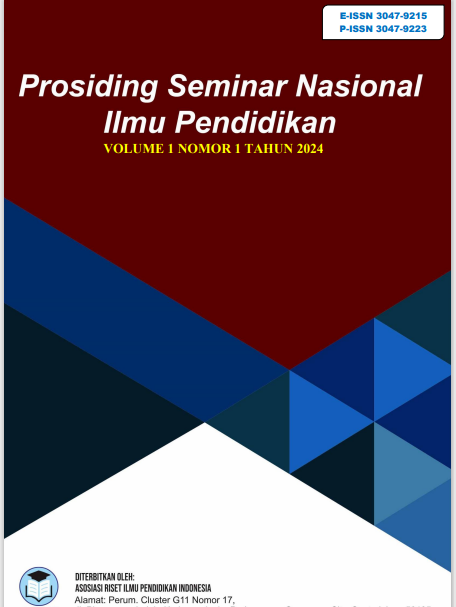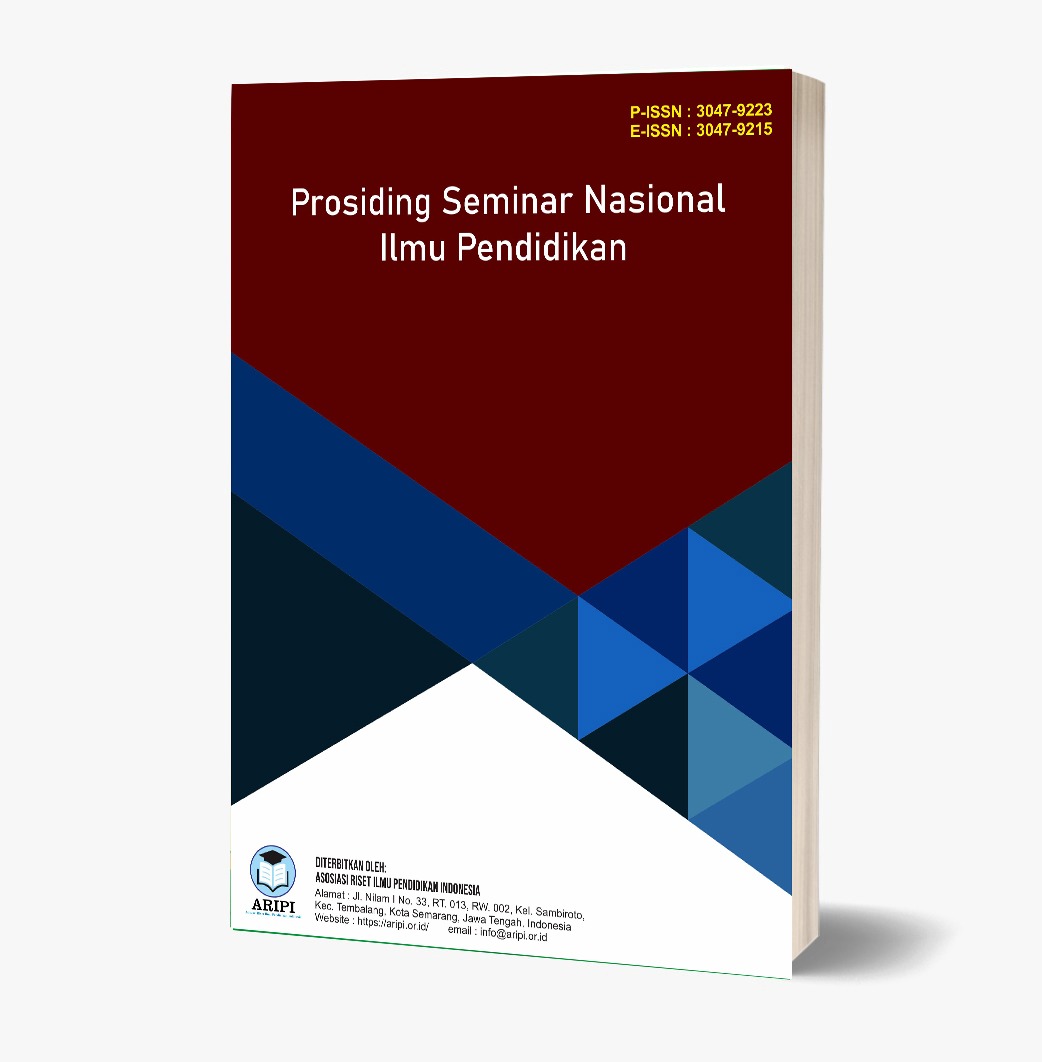Aktivisme Digital : Gaya Politik Baru Kaum Muda
DOI:
https://doi.org/10.62951/prosemnasipi.v2i1.137Keywords:
Activism, Digital, Style, Youth, PoliticsAbstract
Young people play a very important role in today's political dynamics. In the context of rapid social change and advances in information technology, young people have found new ways to express their opinions and participate in the political process, one of which is through digital activism. Digital activism refers to political involvement carried out by young people by utilizing digital instruments, especially through social media. This research focuses on youth engagement in digital activism and explores the impact of these new movements on social and political change. The methodology used is a qualitative approach by utilizing secondary data from literature studies, while the applied analytical techniques are descriptive and analytical. The results of the study show that there are various forms of digital activism, including online campaigns, petitions, the use of hashtags, and mobilization of movements through social media. Digital activism also has the potential to influence public policy and public perception. However, this movement is also faced with a number of challenges, such as disinformation, propaganda, and technical obstacles such as uneven internet access in various regions. From this research, it is hoped that new insights can be obtained about the dynamics of youth political participation in the digital era, as well as provide recommendations for social activists and policymakers to support the active involvement of the younger generation in the political process.
References
Achmad, F., & Dwimawanti, I. H. (2024). Pengaruh penggunaan media sosial terhadap partisipasi politik Generasi Z dalam Pemilu 2024 di Jawa Tengah. Journal of Public Policy and Management Review, 1(1), 975–990. https://doi.org/10.14710/jppmr.v1i1.49755
Al-Ra’zie, Z. H. (2025). Lembaga swadaya masyarakat (LSM) sebagai kekuatan politik. Ensiklopedia of Journal, 7(2), 150–158. https://doi.org/10.33559/eoj.v7i2.2799
Amin, K., & Nazariana, N. (2023). Analisis gerakan #Metoo sebagai perlawanan kekerasan dan pelecehan seksual bagi perempuan di China. Jurnal Rectum: Tinjauan Yuridis Penanganan Tindak Pidana, 5(1), 1247–1268. https://doi.org/10.46930/jurnalrectum.v5i1.2971
Ashokkumar, A., Talaifar, S., Fraser, W. T., Landabur, R., Buhrmester, M., Gómez, Á., Paredes, B., & Swann, W. B. Jr. (2020). Censoring political opposition online: Who does it and why. Journal of Experimental Social Psychology, 91, 104031. https://doi.org/10.1016/j.jesp.2020.104031
Asosiasi Penyelenggara Jasa Internet Indonesia (APJII). (2024). APJII jumlah pengguna internet Indonesia tembus 221 juta orang. https://apjii.or.id/berita/d/apjii-jumlah-pengguna-internet-indonesia-tembus-221-juta-orang
BBC News. (2019). Demo Hong Kong: Potret kemarahan dan rasa putus asa warga selama enam bulan terakhir. https://www.bbc.com/indonesia/dunia-50708953
Cammaerts, B. (2015). Social media and activism. In R. Mansell & P. Hwa (Eds.), The International Encyclopedia of Digital Communication and Society (pp. 1027–1034). Wiley-Blackwell.
Change.org. (2015). Who are Change.org’s 100 million users? https://www.change.org/l/us/who-are-the-100-million
Douglas, A. (2023). NGO reflections on putting the youth first: Improving youth participation in development practice. Development in Practice, 33(6), 700–712. https://doi.org/10.1080/09614524.2023.2213861
Firdaus, R., & Tutupoho, R. R. (2022). Teknologi crowdfunding dalam kegiatan penggalangan dana sosial berbasis internet di Indonesia (Studi pada situs Kitabisa.com). Jurnal Administrasi Profesional, 3(1), 66–73. https://doi.org/10.32722/jap.v3i1.4963
Galeazzi, A., Paudel, P., Conti, M., De Cristofaro, E., & Stringhini, G. (2024). Revealing the secret power: How algorithms can influence content visibility on social media. arXiv Preprint, arXiv:2410.17390. https://doi.org/10.48550/arXiv.2410.17390
Green Network. (2024). Minimnya kemajuan dalam kebebasan berinternet di Indonesia. https://greennetwork.id/kabar/minimnya-kemajuan-dalam-kebebasan-berinternet-di-indonesia/
Hilmi, M. I. (2020). Modul teori perubahan sosial. Universitas Jember. https://repository.unej.ac.id/handle/123456789/114007
Ida, R., Mashud, M., Saud, M., Yousaf, F. N., & Ashfaq, A. (2025). Politics in Indonesia: Democracy, social networks and youth political participation. Cogent Social Sciences, 11(1), 2432071. https://doi.org/10.1080/23311886.2024.2432071
International Telecommunication Union (ITU). (2024). Internet use continues to grow, but universality remains elusive, especially in low-income regions. https://www.itu.int/itu-d/reports/statistics/2024/11/10/ff24-internet-use/
Kubin, E., & Sikorski, C. (2021). The role of (social) media in political polarization: A systematic review. Annals of the International Communication Association, 45(3), 188–206. https://doi.org/10.1080/23808985.2021.1976070
Larasatiningrum, A. Y. (2015). Youth political and cultural movements against the United States invasion in Vietnam in the 1960s. Rubikon: Journal of Transnational American Studies, 2(1), 1–12. https://doi.org/10.22146/rubikon.v2i1.34233
McCarthy, J. D., & Zald, M. N. (1977). Resource mobilization and social movements: A partial theory. American Journal of Sociology, 82(6), 1212–1241. http://www.jstor.org/stable/2777934
Mundt, M., Ross, K., & Burnett, C. M. (2018). Scaling social movements through social media: The case of Black Lives Matter. Social Media + Society, 4(4), 2056305118807911. https://doi.org/10.1177/2056305118807911
Noor, Z. Z. (2020). Metodologi penelitian kualitatif dan kuantitatif: Petunjuk praktis untuk penyusunan skripsi, tesis, dan disertasi. Deepublish. https://books.google.co.id/books?id=v37LEAAAQBAJ
Pew Research Center. (2023). Ten years of #BlackLivesMatter on Twitter. https://www.pewresearch.org/internet/2023/06/29/ten-years-of-blacklivesmatter-on-twitter/
Pratiwi, A. M. (2021). Mengupayakan keadilan bagi korban kekerasan seksual melalui aktivisme tagar: Kesempatan dan kerentanan di Indonesia. Jurnal Perempuan, 26(3), 197–206. https://doi.org/10.34309/jp.v26i3.617
Rachimoellah, M., Lubis, P. H., & Utimadini, N. J. (2024). Digital activism and political change: Challenges of social media’s impact on political development. Journal of Middle East and Islamic Studies, 11(2), 2. https://doi.org/10.7454/meis.v11i2.177
Rahmadhany, A., Safitri, A. A., & Irwansyah, I. (2021). Fenomena penyebaran hoax dan hate speech pada media sosial. Jurnal Teknologi dan Sistem Informasi Bisnis, 3(1), 30–43. https://doi.org/10.47233/jteksis.v3i1.182
Sainz, G. M., & Hanna, A. (2023). Youth digital activism, social media and human rights education: The Fridays for Future movement. Human Rights Education Review, 6(1), 116–136. https://doi.org/10.7577/hrer.4958
Sarosa, S. (2021). Analisis data penelitian kualitatif. PT Kanisius. https://books.google.co.id/books?id=YY9LEAAAQBAJ
Silva, B. C. (2024). No votes for old men: Leaders’ age and youth turnout in comparative perspective. European Journal of Political Research, 64(1), 276–295. https://doi.org/10.1111/1475-6765.12694
Smidi, A., & Shahin, S. (2017). Social media and social mobilisation in the Middle East. India Quarterly, 73(2), 196–209. https://www.jstor.org/stable/48505308
Statista. (2025). Number of internet and social media users worldwide as of February 2025. https://www.statista.com/statistics/617136/digital-population-worldwide/
Stevenson, C. (2007). Breaching the great firewall: China’s internet censorship and the quest for freedom of expression in a connected world. BC International and Comparative Law Review, 30, 531.
Supriyanto, S. (2022). Gerakan mahasiswa dalam upaya kejatuhan pemerintah Soeharto 1998. Jurnal Impresi Indonesia, 1(2), 66–74. https://doi.org/10.58344/jii.v1i2.15
Surjatmodjo, D., Unde, A. A., Cangara, H., & Sonni, A. F. (2024). Information pandemic: A critical review of disinformation spread on social media and its implications for state resilience. Social Sciences, 13(8), 418. https://doi.org/10.3390/socsci13080418
Tawakkal, G. T. I., & Rohman, A. Z. F. (2022). Metode penelitian kualitatif: Penerapan pada kajian politik pemerintahan. Universitas Brawijaya Press. https://books.google.co.id/books?id=AH2REAAAQBAJ
Tempo. (2022). 10 keberhasilan petisi online bisa mengubah kebijakan. https://www.tempo.co/politik/10-keberhasilan-petisi-online-bisa-mengubah-kebijakan-433819
The Guardian. (2019). Climate crisis: 6 million people join latest wave of global protests. https://www.theguardian.com/environment/2019/sep/27/climate-crisis-6-million-people-join-latest-wave-of-worldwide-protests
Tufekci, Z. (2017). Twitter and tear gas: The power and fragility of networked protest. Yale University Press. http://dx.doi.org/10.25969/mediarep/14848
Vosoughi, S., Roy, D., & Aral, S. (2018). The spread of true and false news online. Science, 359(6830), 1146–1151. https://doi.org/10.1126/science.aap9559
Wong, W. (2021). Youth participation and social media: Evidence from the youth activism and social movement of Hong Kong. In Research Handbook on E-Government (pp. 129–147). Edward Elgar Publishing. https://doi.org/10.4337/9781786437259.00015
Xinyue, D. (2023). Social media as a tool for political mobilization: A case study of the 2020 Hong Kong protests. Journal of Public Representative and Society Provision, 3(1), 10–20. https://doi.org/10.55885/jprsp.v3i1.199
Downloads
Published
How to Cite
Issue
Section
License
Copyright (c) 2025 Prosiding Seminar Nasional Ilmu Pendidikan

This work is licensed under a Creative Commons Attribution-ShareAlike 4.0 International License.







